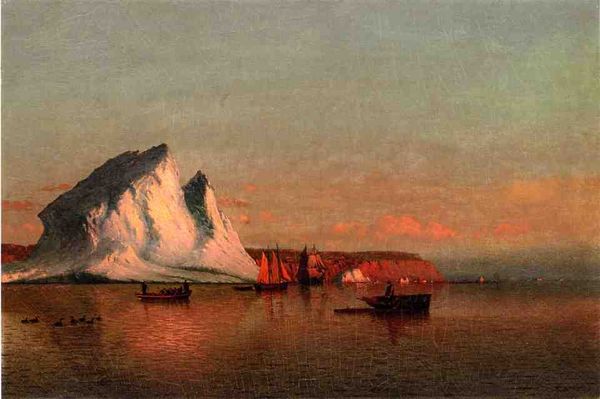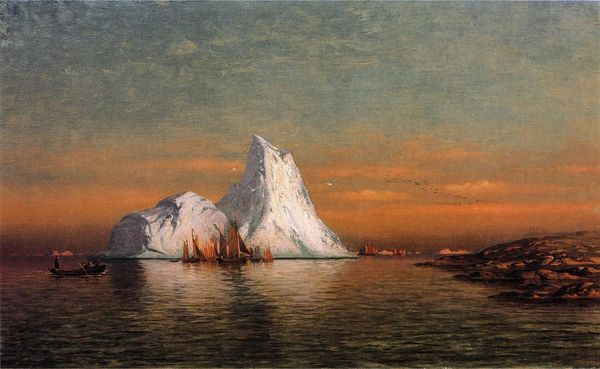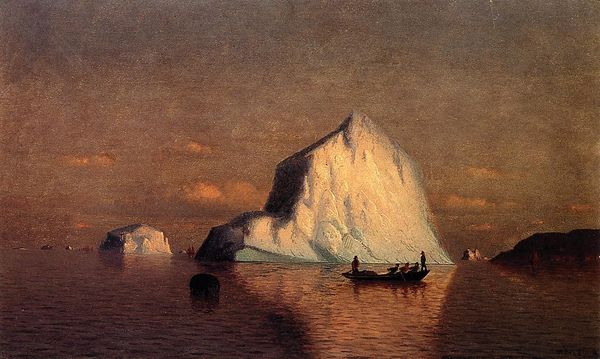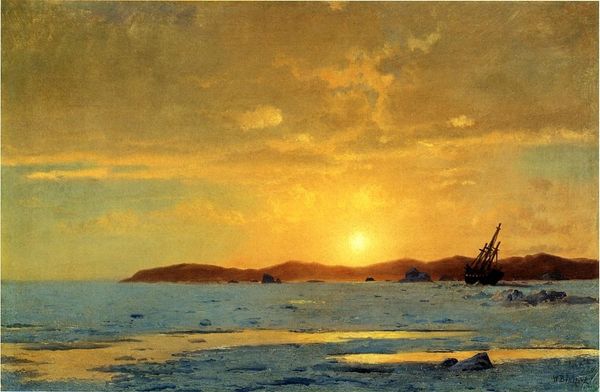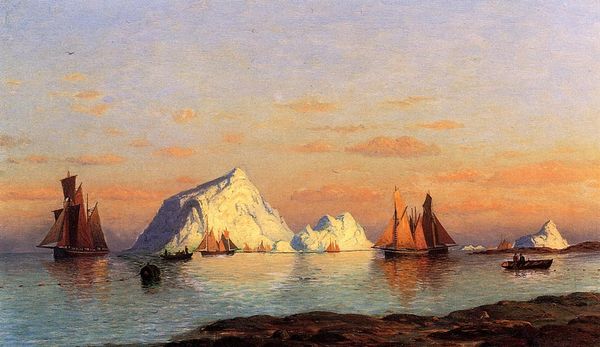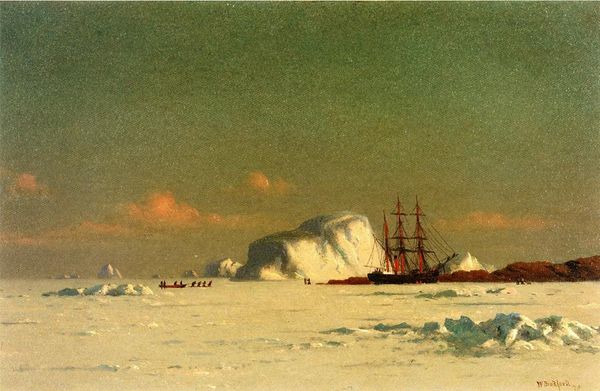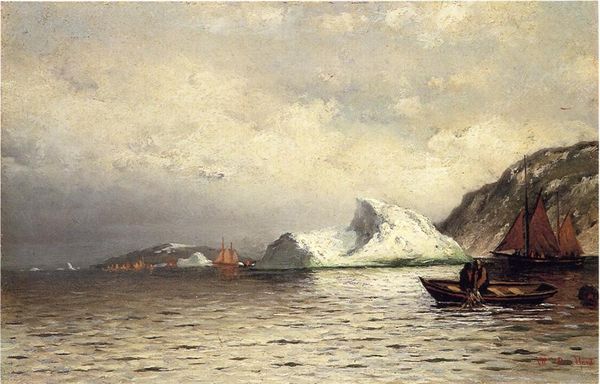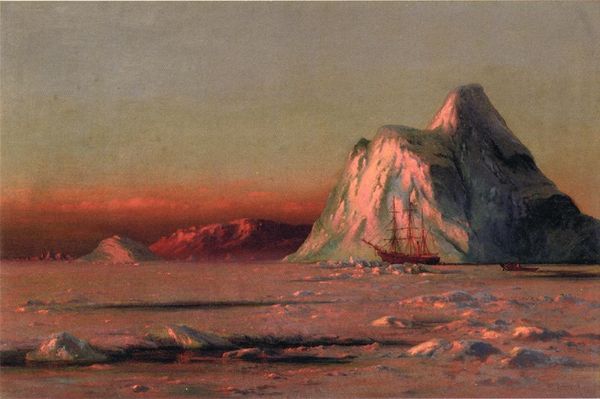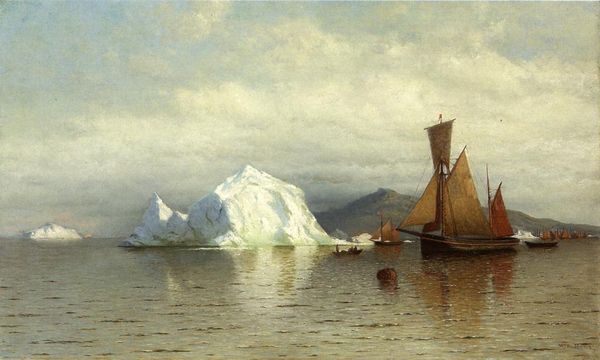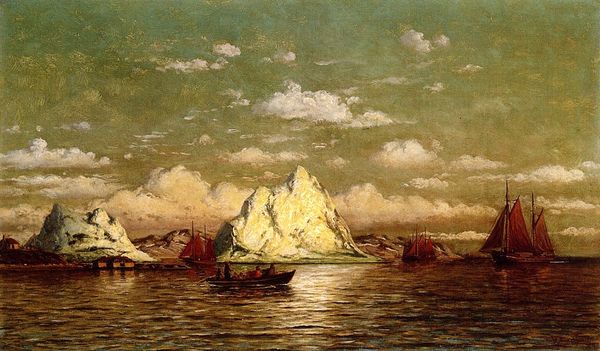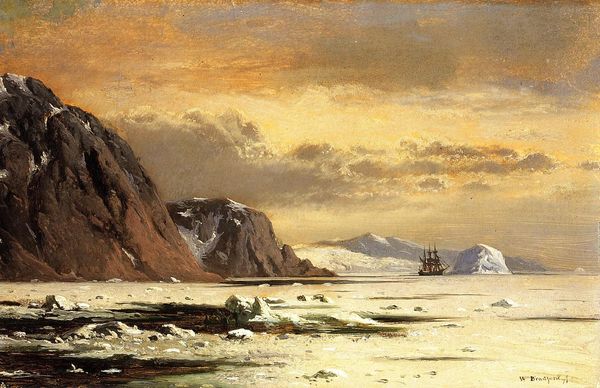
Copyright: Public domain
Editor: This is William Bradford's "Fishermen off the Coast of Labrador," painted in 1881 with oil on canvas. The pervasive reddish-brown hues give the scene an almost apocalyptic feel. What's your interpretation of the themes in this piece? Curator: That initial impression is telling, particularly regarding how the Hudson River School grappled with representing the sublime alongside the encroaching realities of industrialization and its impact on vulnerable communities. Notice how the almost imperceptible figures in the small boat are dwarfed by the immensity of the landscape. Editor: Absolutely. It feels like they're at the mercy of nature. Curator: Exactly. Bradford, along with other artists of his time, engaged with representing marginalized communities whose livelihoods were directly connected to these environments. However, there is also the lingering question of how these depictions, created by privileged artists, reinforced colonial power dynamics through romanticism. How can we reconcile appreciating the aesthetic value while remaining critically aware of the social and political contexts? Editor: So it's about questioning whose narrative is being centered and what power structures are at play? Curator: Precisely. Consider how Bradford’s lens may both reveal and obscure the lived experiences of those fishermen and their communities. Who benefited from this portrayal and how might that reflect in art making today? Editor: That really reframes how I see the painting. It's more complex than just a pretty landscape. Curator: Indeed. It compels us to look beyond the surface and ask critical questions about representation, agency, and the intersection of art and social justice. These dialogues encourage greater reflexivity in interpreting and understanding art's role in shaping cultural narratives.
Comments
No comments
Be the first to comment and join the conversation on the ultimate creative platform.
